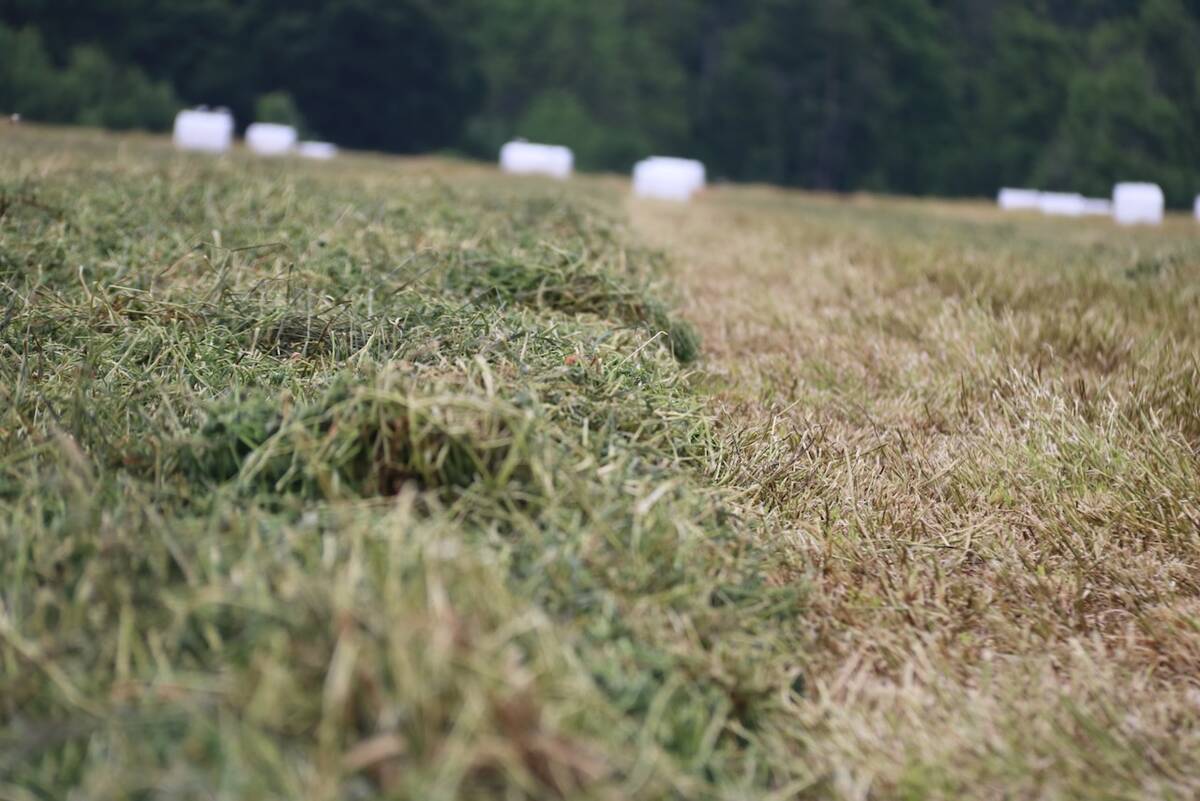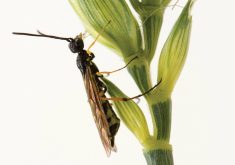When it comes to canola variety selection, short-sighted decisions can harm your long-term success, a panel told farmers attending Manitoba Ag Days.
While the cost of seed and the potential returns are factors that influence many producers’ choices, they must also consider weed control, spring soil conditions and disease, agronomists said.
Karen Fatteicher, an agronomist with 360 Ag Consulting, says she once asked a friend who is a farmer what kind of canola she grew. Her friend answered, “The cheapest.” But Fatteicher advises it’s best not to let price dictate the variety you choose.
Read Also

New high-performance forage training program to launch in 2026
A new Canadian Forage and Grasslands Asssociation high-performance forage program will be a resource for farmers, agronomists and others in the forage sector.
“If somebody is trying to sell you something that’s on the shelf, it’s on the shelf for a reason,” she says. “You will not grow yourself into prosperity by saving on seed costs. Keep moving the needle with your varieties.”
While it’s important not to choose a variety based solely on cost, Brunel Sabourin, an agronomist with Antara Agronomy, says the opposite is also true. Choosing a variety specifically because it offers higher returns could also have unforeseen consequences.
Sabourin notes many growers are tempted by specialty canola oils, which often come with a premium price. “But we need to ask ourselves: Is the juice worth the squeeze?” he says, questioning whether the extra cost and effort are truly worthwhile.

If the grower has to make yield compromises to grow that variety and, as a result, ends up with a stubborn weed problem, it could mean spending more on herbicides or other expenses associated with dealing with the issue.
Panellist Breanna Miller-Friesen, an agronomy specialist with the Canola Council of Canada, has a different take on the same question.
Clubroot
“I think it goes back to the problem we’re trying to solve,” she says. “Say we have a clubroot issue. If the tradeoff is a couple of bushels of yield versus a clubroot infestation, that makes our decision a lot easier. It’s definitely worth that potential yield loss versus, say, developing a weed resistance issue.”
Also discussed was that variety selection can vary widely from place to place. The panel’s focus was Manitoba, but even within the province, the needs can vary from region to region and even from farm to farm.
Sabourin, who works mainly with farmers in the Red River Valley south of Winnipeg, places the highest priority on herbicide resistance.
“Over the last couple of years, we’ve been dealing with waterhemp. But we’ve also got herbicide resistance to weeds like kochia and lady’s thumb,” Sabourin notes. “So, we want a herbicide tolerance system that is going to match the weed spectrum in the field.”
Sabourin also considers planting equipment on an individual farm, which can become an issue in terms of row spacing.
“We’re in an area where a lot of people have justified buying planters to put canola seed down,” he says, noting planters are typically set for row spacing between 15 and 20 inches.
Row spacing and weeds
Row spacing can be an issue for a couple of reasons. Again, it’s an important consideration for crowding out weeds such as waterhemp, but Sabourin points out it also has an effect on harvest.
“These wider row spacings are not as conducive to swathing canola, so that is another thing that we have to consider,” he says, adding that would mean he’d be looking for varieties that have very good pod-shatter resistance.
Fatteicher also looks at variety selection from a farm-by-farm perspective. The first thing she looks for in a canola variety is yield.
But in the Parkland region, about 400 km northwest of Winnipeg, Fatteicher works with farmers facing unique challenges. The area along the Saskatchewan-Manitoba border is on the windward side of the Manitoba escarpment, so it can get heavier precipitation. As a result, early emergence is an important trait for a lot of her customers.
“We have a lot of challenges in our area,” Fatteicher says.
Farmers sometimes have to plant under less-than-ideal conditions, often ‘mudding it in,’ with cold, wet soil at planting time. Flea beetles are also a big concern.
“When your agronomist calls and says it’s Biblical, that’s fairly serious,” Fatteicher says. “So, we need varieties that are going to get up and go.”
When to switch
Panelists said there are many reasons why a grower might look at switching varieties. Miller-Friesen says farms typically are running with between two and four varieties, and the changes tend to be incremental. It could be that a new variety on the market boasts a better disease package. The farmer might try it out to see if they like the results.
“It was never big, dramatic changes,” she explains. “It was kind of a slow, two- to three-year cycle.”
Several years ago, Fatteicher says, her company noticed two completely different systems that were using two widely used “cornerstone varieties” that had big problems with disease that year.
“When we see things like that happening, it’s a very large signal for us to switch out those varieties,” she says.

Sabourin says one thing that can be critically important is knowing that standards change when it comes to disease resistance. A previously effective variety may no longer be up to the task.
“I got caught a couple of years ago,” he says. “I made the assumption that sclerotinia disease ratings for all new varieties were as good as the old ones.”
It was a dry year, so Sabourin and his customer had made the call not to spray. They ended up with a low-level sclerotinia outbreak. And when he checked the guide, sure enough, the rating wasn’t up to Antara’s standards.
“There are differences, and we do need to pay attention to those,” he says.
Finally, the panel was asked about their wish list for traits in new varieties coming down the pipe. Ag Days also ran an audience poll asking the same question. Interestingly, 60 per cent of audience members listed verticillium resistance. The audience poll highlights the growing impact of verticillium, particularly in Manitoba, as well as the lack of associated management options.
Variety wish lists
Both Miller-Friesen and Sabourin sided with the crowd on the question.
“I believe verticillium has been a silent yield robber for a number of years,” Miller-Friesen says.
Early on in 2024, she says, things looked great for the canola crop. There were excellent stands, a great canopy, lots of pods, and it flowered for a while. Everyone was expecting good yields.
“So, why did we yield five to 10 bushels less than expected? I believe that’s verticillium,” she says. “Our growers are doing everything they can, and what we’re getting off the combine is not matching what we expected.”
Sabourin says he’s been seeing the same thing and suggested exploring the relationship between blackleg and verticillium.
“It seems to go hand in hand with blackleg,” he says. “This year, every sample we sent away came back 100 per cent for verticillium and blackleg.”
Fatteicher points to higher production costs combined with the Canola Council’s “lofty goals” when it comes to canola output and said farmers need a leg up.
“The seed companies need to move the needle on their disease resistance,” she says. “I feel like we are out of options right now if we want to keep moving forward. That is the biggest thing that needs to get addressed.”
















